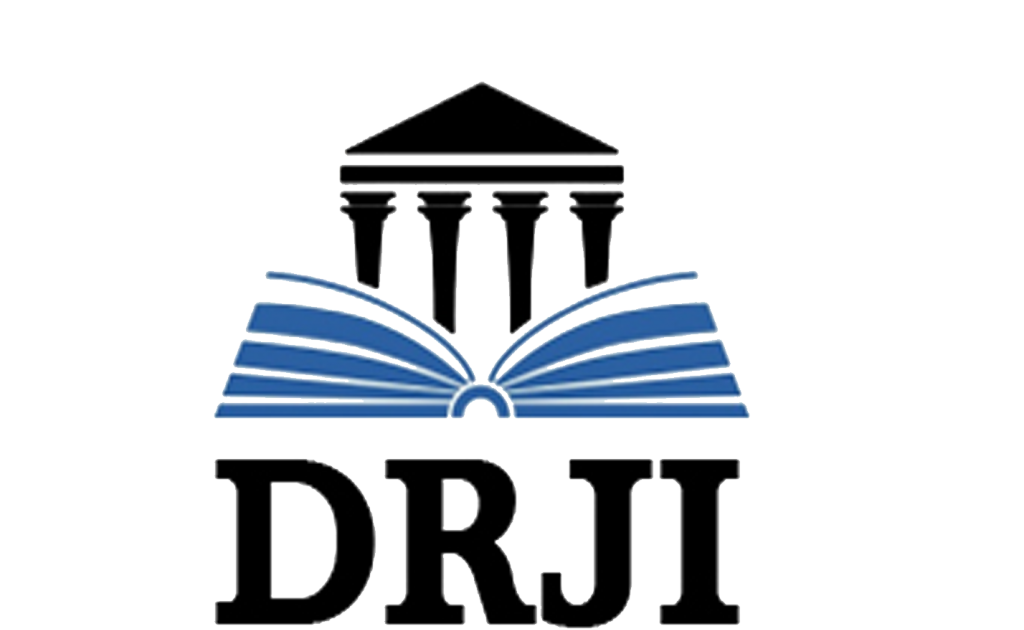The action criminal bankruptcy
DOI:
https://doi.org/10.53591/rug.v126i1.813Keywords:
action, criminal, competition, creditorsAbstract
The problem of the extensive processing that establishes procedural legislation in civil matters in the case of shares with creditors to claim their rights, who finally decide to sue for criminal proceedings by the Arts was analyzed. 205 to 208 COIP, because in many cases, can not acquire the resources that belong to them, so it was proposed to analyze critically the prosecution in the process of bankruptcy, applying the qualitative method, deductive inductive, descriptive, bibliographic, field, with use of interview technique applied to the autoridade of the Faculty of Law of the University of Guayaquil, obtaining as most relevant finding that cases in which the bankruptcy must be vented under criminal law, is when fraudulent insolvency checks "and / or fraudulent bankruptcy by altering assets and liabilities, which is punishable by one to three years in prison, caused by the difficulty of the process of bankruptcy, because in the country is not what has been simplified so that it can guarantee the rights of creditors, increasing the risk of fraudulent action on insolvency, concluding checking the premise that criminal proceedings where fraudulent insolvency, must protect legal rights of creditors prior contest, suggesting a procedure for implementation of the precautionary measures under sum presumption of ownership of creditors against the persons involved in fraudulent insolvency.
References
García, Á., & Martín , A. (2003). La caracterización del estudiante en los entornos virtuales del aprendizaje. Revista educación, 4 -5.
Fernández, I., Álvarez, N., & Calunga, S. (2006). La caracterización psicopedagógica del estudiante. Camaguey: Universidad de Camaguey.
González-Llerena, G. (2011). El diagnóstico escolar y la caracterización. Su importancia en la entrega pedagógica. Revista IPLAC, 6- 8.
González - Llerena, G. (2011). El diagnóstico escolar y la caracterización. Su importancia en la entrega pedagógica. Revista IPLAC, 6- 8.
Murcia, U. d., & sicologia, a. d. (2010). sindrome de Burnout, evolucion historica desde el contexto laboral . Maicon Carlin, http://www.um.es/analesps/v26/v26_1/20-26_1.pdf.
Rodriguez, M. (s.f.). El Estrés en el Ámbito Laboral. El estrés y sus causas. Jornadas sobre Seguridad y Salud Ocupacional, (pág. 3). Madrid.
Mercosur, c. I. (2009). factores sicosociales de la violencia laboral. I Congreso Internacional de Investigación y Práctica Profesional en Psicología XVI, (pág. 3). Buenos aires.
Seisdedos Nicolas colegio de sicologos de madrid. (Nicolas Seisdedos). El clima laboral y su medida. El clima laboral y su medida, http://www.copmadrid.org/webcopm/publicaciones/trabajo/1985/vol2/arti1.htm.
Expreso, D. E. (01 de 09 de 2012). Obtenido de En Ecuador, el 10% de la población tiene estrés: http://expreso.ec/expreso/plantillas/nota_print.aspx?idArt=3645226&tipo=2
Fernández, R. (2010). La productividad y el riesgo psicosocial. Madrid.
Acosta, J. (2011). Gestión del estrés. Barcelona: Bresca.
Coraggio, j. L. (2004). LA PRESENCIA DE LA ECONOMIA SOCIAL Y SOLIDARIA (ESS) Y SU. LA PRESENCIA DE LA ECONOMIA SOCIAL Y SOLIDARIA (ESS) Y SU, http://www.coraggioeconomia.org/jlc/archivos%20para%20descargar/A%20Ponencia%20ES%20estados%20generales%20junio%202011.pdf.
Semplades. (2010). plan estrategico sumak kawsay del ecuador. Buen Vivir, constitucion politica del Ecuador, http://plan.senplades.gob.ec/3.3-el-buen-vivir-en-la-constituciondel-ecuador.
Amsterdam, t. d. (2014). tratados constitutivos de la Union Europea. http://www.europarl.europa.eu/topics/treaty/pdf/amst-es.pdf, (págs. 33- 34). luxemburgo.
AMERICAN PSICHOLOGYCAL ASSOCIATION. (2014). EL ESTRESS PROBLEMA SERIO EN LOS EE.UU. http://www.apa.org/centrodeapoyo/estres-problema.aspx, 1.
Sociales, D. G. (2014). Guia sobre el estres relacionado con el trabajo. http://pendientedemigracion.ucm.es/info/seas/estres_lab/informes/Informe%20europeo%20Estres%20Laboral.pdf, http://pendientedemigracion.ucm.es/info/seas/estres_lab/informes/Informe%20europeo%20Estres%20Laboral.pdf.
word Health Organization. (2014). sensibilizacion sobre el estres laboral en los paises en desarrollo. proteccion de la salud de los trabajadores Tomo 6, http://whqlibdoc.who.int/publications/2008/9789243591650_spa.pdf. www.estreslaboral.info. (2013). ¿Qué es el estrés laboral?
Arboleda, H. N. (2011). Proyecto de estudio de las pausas activas en el clima laboral y su influencia e impacto para la motivación y satisfacción física de los empleados de PREMEX Ecuador en la ciudad de Quito. Quito: Ecuador.
Constitución. (2008). Artículo 34. Quito: Asamblea Nacional.
Reglamento. (2010). Del derecho a las prestaciones en el seguro de riesgos del trabajo. Quito .
Decreto2393. (2010). Del Instituto Ecuatoriano de Seguridad Social. Quito.
InstitutoAndino. (2010). Resolución 390. Quito.
Reslución390. (2010). Reglamento del Seguro General de Riesgo del Trabajo. Quito.
José, P. (2011). Estrés laboral y riesgos psicosociales. España: Universidad de Valencia.
Comin Anadon, E., de la Fuente Albarrán, I., & Gracia Galve, A. (s.f.). El estres y Riesgo para la Saludo. Madrid: MAZ.
Puga, M. (2013). El proceso penal la última oportunidad para el acreedor de una empresa en concurso. Madrid, España : Lawyer Press. http://www.lawyerpress.com/news/2013_03/2303_13_001.html.
Arazi, R. (2011). La prueba en el proceso civil. Buenos Aires, Argentina: Editorial La Rocca. Segunda Edición.
Asamblea Constituyente. (2008). Constitución de la República. Montecristi, Ecuador: Registro No. 449. https://www.corteconstitucional.gob.ec/images/contenidos/quienessomos/Constitucion_politica.pd.
Asamblea Nacional. (2015). Ley Reformatoria al Código Civil. Quito, Ecuador : Registro Oficial 526 Segundo Suplemento. http://www.oficial.ec/ley-reformatoria-codigo-civil.
Asamblea Nacional Constitucional. (2014). Código Orgánico Integral Penal. Quito, Ecuador: Registro Oficial Suplemento No. 180. Lhttp://www.asambleanacional.gob.ec/es/system/files/document.pdf.
Secretaría Nacional para la Planificación del Desarrollo. (2009). Plan Nacional del Buen Vivir. Quito, Ecuador: SENPLADES. http://www.planificacion.gob.ec/plan-nacional-para-elbuen-vivir-2009-2013/.
Cornejo, A. (2013). Derecho Cívil. Tomo I. Santiago de Chile: Editorial Jurídica Congreso. 12da. Edición. Págs. 492 y 493.
Mantilla, C. (2014). Concurso de acreedores. México: Carlos Mantilla Asesores Audirores. http://www.carlosmantilla.es/attachments/article/22/Carlos%20Mantilla%20Concurso %20de%20acreedores.pdf.
Asamblea Nacional Constitucional. (2011). Código de Procedimiento Civil. Quito, Ecuador: Registro Oficial Suplemento No. 58. 24 de noviembre del 2011. http://www.planificacion.gob.ec/wp-content/uploads/downloads/2015/04/Codigode-Procedimiento-Civil.pdf.
Asamblea Nacional Constitucional. (2015). Código Orgánico General de Procesos. Quito, Ecuador: Registro Oficial Suplemento No. 506. Viernes 22 de mayo del 2015. http://www.funcionjudicial.gob.ec/pdf/CODIGO%20ORGANICO%20GENERAL%20DE%20PROCESOS.pdf.
H. Congreso Nacional. (2013). Código Civil. Quito, Ecuador: Suplemento del Registro Oficial 46.
Lunes 10 de febrero del 2014. Codificación 2005 – 010. http://www.epn.edu.ec/wpcontent/uploads/2015/06/Codigo-Civil1.pdf.
Asamblea Nacional. (2012). Código de Comercio . Quito, Ecuador: Registro Oficial Suplemento 1202 de 20 de agosto de 1960. http://www.scpm.gob.ec/wpcontent/uploads/2013/03/C%C3%B3digo-de-Comercio.pdf.
Muñoz, A. (2012). El requisito de probar la insolvencia del deudor . Madrid, España: Editorial Notas Jurídicas.
Cabanellas, G. (2011). Diccionario Jurídico Elemental. Buenos Aires, Argentina: Editorial Heliasta S.R.L. Décimo novena edición.
Andrade, F. (2012). Diccionario guía y índice. Volumen II. Quito, Ecuador: Fondo de Cultura Ecuatoriana. Segunda Edición.
Alarcón, A. (2015). La perspectiva constitucional de la insolvencia de persona natural no comerciante, nueva tendencia concursal y su aplicabilidad en Colombia . Colombia: https://www.google.com.ec/urlsa=t&rct=j&q=&esrc=s&source=web&cd=8&cad=rja&uact=8&ved=0ahUK.
Cuberos, G. (2013). Insolvencia: evolución de un concepto. Caracas, Venezuela : Revista Redalyc. Universidad de Los Andes. Facultad de Derecho. http://www.redalyc.org/pdf/3600/360033182002.pdf.
Cruz, A. (2012). Las acciones del acreedor. Quito, Ecuador: Editorial EDINO.
Published
How to Cite
Issue
Section
License

This work is licensed under a Creative Commons Attribution-NonCommercial-NoDerivatives 4.0 International License.

This work is licensed under a Creative Commons Attribution-NonCommercial-NoDerivatives 4.0. International License.
You are free to:
- Share — copy and redistribute the material in any medium or format
- The licensor cannot revoke these freedoms as long as you follow the license terms.
Under the following terms:
- Attribution — You must give appropriate credit , provide a link to the license, and indicate if changes were made . You may do so in any reasonable manner, but not in any way that suggests the licensor endorses you or your use.
- NonCommercial — You may not use the material for commercial purposes .
- NoDerivatives — If you remix, transform, or build upon the material, you may not distribute the modified material.
- No additional restrictions — You may not apply legal terms or technological measures that legally restrict others from doing anything the license permits.































